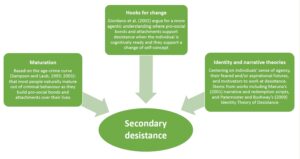Youth Offending Teams effective
Media coverage of last Thursday’s (14 December 2017) Chief Probation Inspector’s Annual Report was dominated by Dame Glenys Stacey’s forthright and, frankly, damning verdict on both the performance of probation services and the Transforming Rehabilitation model itself.
This meant that the inspectors’ findings that most Youth Offending Teams were delivering a high quality service, also covered in the same report, was hardly mentioned.
This blog posts sets out to rectify that situation.
Context
Youth Offending Teams are operating at a time of great change in youth justice. Post-court and caution caseloads have fallen dramatically (from 147,791 in 2006/2007 to 32,949 in 2015/2016: a reduction of 78%). First-time entrants to the youth justice system have fallen (from 110,801 in 2007/2008 to 18,263 in 2015/2016: a reduction of 84%), as has the number of young people in custody (an average monthly population of 2,915 in 2007/2008 down to 959 in 2015/2016; a reduction of 67%).
These reductions are linked to the efforts which have been made to ensure that young people are diverted from court for less serious offences, often through out of court disposals (OOCDs). The police now have more discretion about whether to prosecute children, allowed by a change to police targets in 2008 and by the removal of the automatic escalator in OOCDs prior to the Legal Aid, Sentencing and Punishment of Offenders (LASPO) Act 2012.
YOTs have no statutory duty to engage with community resolutions or first youth cautions. Nevertheless, OOCDs form the bulk of YOT work in some areas, often as part of formalised programmes developed jointly with police. As a consequence of the recent changes, those young people left within the youth justice system tend to be the more troubled, and they often have multiple and serious needs. A recent HMIP inspection found that around four in five young offenders who had committed serious offences had suffered trauma in their lives.

The quality of Youth Offending Services
Probation Inspectors’ judgments on the quality of work delivered by Youth Offending Teams are based on 2,929 cases from 129 inspections, the main findings were:
- Overall, YOTs were producing good-quality PSRs that were sufficiently well-informed, analytical and personalised to the child or young person, in order to support the court’s decision making.
- Research has highlighted the importance of engagement, not passive involvement, with the child or young person. Giving the child or young person a voice and treating them with respect help to build the one-to-one trusting personal relationships which can be a powerful vehicle for change. We found sufficient engagement with the child or young person and their parents or carers in more than nine in ten cases at the PSR stage.
- In our inspections, we found that work to protect the public was generally of good quality across YOTs, although there was some room for improvement, particularly in the reviewing of plans.
- Planning at the start of sentence for work to manage risk of harm to others was judged to be sufficient in around seven in ten cases.
- Overall, we found that YOTs protected the public well and were also doing a good job to change young people’s lives for the better. Across the YOTs we inspected, they had used their powers to keep victims safe in 87% of the cases. While around two in five of our sample failed to comply with the court order, in all of these cases, the YOTs took appropriate action.
- We found the assessment of vulnerability to be sufficient in the majority of cases. There was room for improvement in the review of assessments, with more needing to be done to examine significant changes in the young persons’ lives. We found that the assessment of vulnerability and safeguarding needs was sufficient in around four in five cases.
- Work to reduce reoffending was generally done well. We found that sufficient assessment and planning had taken place in the majority of cases but assessment and plans should be reviewed more often.
- Effective enforcement was evident in most cases. Research has highlighted the importance of engagement with the child or young person, as well as their parent or carer. We found the majority of children and young people meaningfully involved in all stages of their cases, reducing the risk that enforcement would be necessary. While we usually found sufficient assessment of diversity factors and barriers to engagement, there were cases where factors such as learning styles and speech, language and communication needs were not fully understood.
- Engaging the child or young person’s parents, carers and other highly significant people in their life can help to produce an assessment and plan that is more relevant to their needs. We found that there had been sufficient engagement of the child or young person and their parents and carers to help understand the relevant factors in nine out of ten cases.
One of the inspectorate’s most important findings (to my mind) was that the vast majority of front line staff felt that their managers supported and actively helped them to improve the quality of their work:

Conclusion
It is heartening to see that an adequately resourced sector with a motivated and committed workforce can deliver a high quality service to some of the most vulnerable people in our society, with positive outcomes for individual, their families, potential future victims and broader society.








